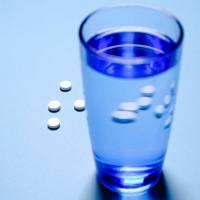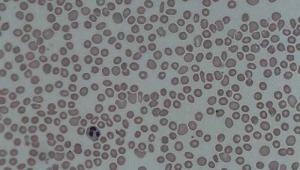Peroxisomes: what they are, characteristics and functions
The cell is the basic unit of existence. All living beings on Earth present at least one cell, that is, a physiological unit capable of nourish, grow, multiply, differentiate, signal chemical stimuli, and evolve over time time.
The only entities that generate conflict as far as the definition of "life" is concerned are viruses, viroids and prions, because they consist of molecules of genetic information (or simple misfolded proteins) with pathogenic capacity and little further.
As far as human beings are concerned, It is estimated that our body contains an average of 30 trillion cells, divided into different lineages with specific functionality., according to its physiology, origin and location. Red blood cells are the most abundant cell bodies in our body by far, since they occur in orders of about 5,000,000 per cubic millimeter of blood. Without a doubt, these oxygen carriers are one of the most basic units in the balance of our body.
With all this data, the following statement is more than clear: we are each and every one of our cells. From the one that flakes off the epidermis (about 30,000 every day) to some neuronal bodies that accompany us throughout our lives, each cell unit is essential and defines us as a species and individuals. Based on this premise, we tell you everything about
peroxisomes, some very interesting cell organelles.- Related article: "The Most Important Cell Parts and Organelles: A Summary"
What are peroxisomes?
Peroxisomes are cytoplasmic organelles found in most eukaryotic cells., that is, those that have the nucleus differentiated from the rest of the cytoplasm by means of a membrane and make up multicellular living beings.
For its part, an organelle is defined as an elementary constituent part of the cell, which has a structural unit and fulfills a specific function. Within this category we find mitochondria, chloroplasts, vacuoles and peroxisomes, among other specific bodies.
Returning to the concept that concerns us here, it should be noted that peroxisomes are round, membrane-bounded organelles 0.1–1 micrometers in diameter. Inside, they contain key enzymes for carrying out various metabolic reactions, including many aspects of cellular metabolism, process by which each one of these functional bodies obtains the necessary energy to develop its activities.
It is estimated that, within each peroxisome, there are an average of 50 different enzymes capable of catalyzing various reactions, which vary according to the type of cell that contains the organelle and its physiological state. For example, these organelles contain 10% of the total activity of two enzymes involved in the pathway of the pentose-phosphate, closely related to glycolysis (oxidation of glucose to obtain energy).
Differences with other organelles
Peroxisomes are very different from typical organelles (mitochondria and chloroplasts) in complexity and function.. They do not have their own genetic material (circular DNA), they are only wrapped in a membrane and do not contain mitorribosomes or chlororibosomes in their matrix.
The endosymbiotic theory postulates that mitochondria and chloroplasts were ancestral prokaryotic bacteria and archaea that were ingested, so it is hard to match their physiological complexity inside the cell.
Morphologically they are similar to lysosomes, but have in common with evolutionarily more organelles. complexes the fact that the proteins that compose them come from free ribosomes cytoplasmic. Without the protein-building activity of ribosomes, peroxisomes, mitochondria, and chloroplasts could never form. Anyway, Since peroxisomes do not have their own genome, all proteins must come from these cytosolic ribosomes.. In the case of mitochondria and chloroplasts, a small percentage of the protein molecules are synthesized within themselves.
- You may be interested in: "The 20 types of proteins and their functions in the body"
The functions of peroxisomes
As we have said, each peroxisome contains a minimum of 50 different enzymes depending on the cell type in which they are found. These organelles were first defined as bodies that carried out oxidative reactions, leading to the production of hydrogen peroxide, thanks to the discovery of peroxidase enzymes in its inside.
As hydrogen peroxide is a cell-damaging compound, peroxisomes also contain catalase enzymes, which break it down in water or use it to oxidize other compounds. Various oxidative reactions take place in this organelle, highlighting among them those of uric acid, amino acids and fatty acids.. Curiously, the enzyme urate oxidase (responsible for oxidizing uric acid to 5-hydroxyisourate) is found in many unicellular and multicellular beings, but not in humans. We have the gene that encodes it, but it is not functional due to a mutation.
One of the most important fronts in which peroxisomes stand out is the oxidation of fatty acids, since these are a key source of energy for the functioning of living beings at the micro and macroscopic level. In animal cells, oxidation of these lipid biomolecules takes place in peroxisomes and ribosomes by the same, but in other species of living beings (such as yeasts), peroxisomes are the only ones capable of perform the.
In addition to giving the cell an accessory (or unique, as in the case of yeast) compartment for oxidative reactions, it should also be noted that peroxisomes are involved in biosynthesis lipid. In animals, both cholesterol and dolichol (bilayer membrane lipid) are synthesized in peroxisomes and endoplasmic reticulum (ER) alike. On the other hand, in liver cells, these multifaceted organelles are also responsible for making bile acids, which we remember come from cholesterol.
As if this were not enough, peroxisomes also contain enzymes necessary for the synthesis of plasmalogens, phospholipids especially important in the anatomy of cardiac tissue and cerebral. As you can see, peroxisomes are key centers for oxygen utilization (oxidation), but they also play many other essential roles at both the tissue and cellular levels.
Specially plastic organelles
Finally, it should be noted that peroxisomes show unusual plasticity in the world of organelles. These small circular bodies can multiply in number and size in the face of certain stimuli. physiological, to then return to the initial situation once the exogenous trigger has missing. In addition, they are also capable of varying their enzymatic repertoire according to the physiological situation of the organism.
This is due to a very effective multiplication ability: strangling. To initiate this process, the membrane of the peroxisome comes into contact with that of the endoplasmic reticulum (ER), event that allows the transfer of membrane lipids from the ER to the organelle that concerns us here, increasing its useful surface. Once this "donation" has been received, the peroxisome is capable of dividing into 2 new ones, which will gradually mature their protein content. (both inside and on the membrane) as the free ribosomes make the proteins they need to function.
In addition to this, it is also worth noting that the cell of the living organism is capable of generating peroxisomes from scratch, when all the pre-existing ones have disappeared from the cytosol. This process is very complex at the biochemical level, but it is enough for us to know that it is produced thanks to the synthesis of vesicles in the endoplasmic reticulum and the mitochondria of the cell.
Summary
When we think of cell organelles, old acquaintances automatically come to mind, like mitochondria or chloroplasts, maybe ribosomes and vacuoles, if we know more about the issue. Many truly interesting organic bodies present in our cytosol are lost along the way, and peroxisomes are a clear example of this.
These multifaceted organelles contain more than 50 different types of enzymes, many of them specialized in the oxidation of substances essential for the cell to obtain metabolic energy to carry out its functions. In addition, its ability to grow in number and size allows the cell to adapt to environmental demands quickly and effectively. Without a doubt, these small organelles are essential for the life of those who carry them.
Bibliographic references:
- The nonvesicular cell: peroxisomes, Atlas of plant and animal histology. Collected on April 15 in https://mmegias.webs.uvigo.es/5-celulas/6-peroxisomas.php
- Lazarow, P. B., & Fujiki, Y. (1985). Biogenesis of peroxisomes. Annual review of cell biology, 1(1), 489-530.
- Peroxisomes, The Cell: A Molecular Approach. 2nd edition. Collected on April 15 in https://www.ncbi.nlm.nih.gov/books/NBK9930/
- Rachubinski, R. A., & Subramani, S. (1995). How proteins penetrate peroxisomes. Cell, 83(4), 525-528.
- Sakai, Y., Oku, M., van der Klei, I. J., & Kiel, J. TO. (2006). Pexophagy: autophagic degradation of peroxisomes. Biochimica Et Biophysica Acta (BBA)-Molecular Cell Research, 1763(12), 1767-1775.
- Schrader, M., & Fahimi, H. d. (2006). Peroxisomes and oxidative stress. Biochimica et Biophysica Acta (BBA)-Molecular Cell Research, 1763(12), 1755-1766.
- Tolbert, N. E., & Essner, E. (1981). Microbodies: peroxisomes and glyoxysomes. The Journal of cell biology, 91(3), 271.
- Van den Bosch, H., Schutgens, R. b. H., Wanders, R. J. A., & Tager, J. m. (1992). Biochemistry of peroxisomes. Annual review of biochemistry, 61(1), 157-197.


